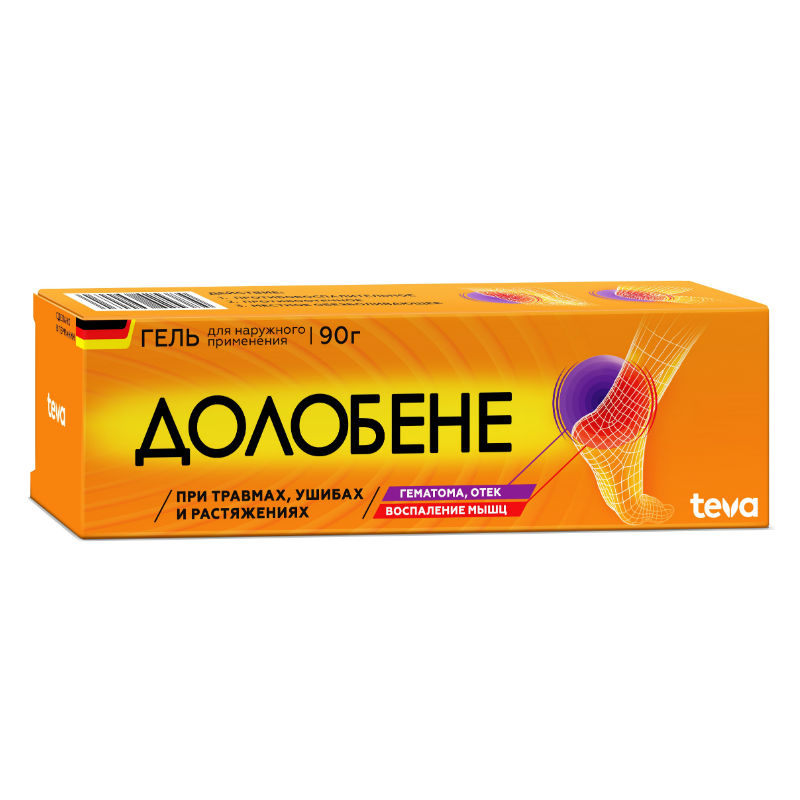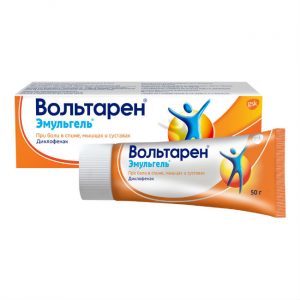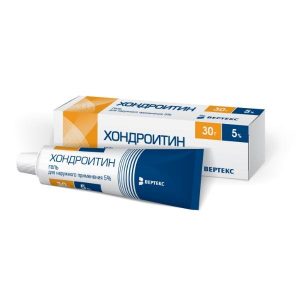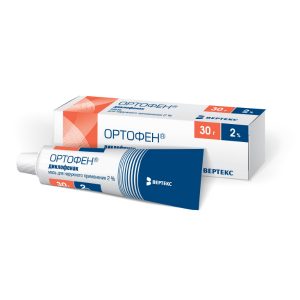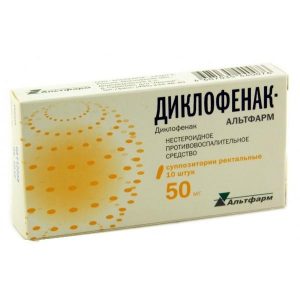Description
Pharmacological action
DMSO has anti-inflammatory, decongestant and local analgesic effects.
Anti-inflammatory activity is associated with some pharmacological effects, the most significant of which is the inactivation of hydroxyl radicals, which are produced in large quantities during the inflammation process and have a destructive effect on tissues.
DMSO has a local analgesic effect by reducing the rate of nociceptive (pain) impulses in peripheral neurons. Decongestant action is provided by inactivation of hydroxyl radicals and an improvement in the subcutaneous metabolic reaction at the site of application of the drug. To a certain extent, the hygroscopic properties of DMSO are also responsible for its decongestant effect. DMSO (from 50% or more) penetrates through biological membranes, including through the skin, contributing to a better and deeper penetration into the tissues of other drugs used simultaneously with it.
heparin.
Heparin has an anti-inflammatory effect, promotes the regeneration of connective tissue by inhibiting the activity of hyaluronidase. Heparin exhibits a dose-dependent antithrombotic effect, enhancing the inhibitory activity of antithrombin III on the activation of prothrombin and thrombin. The penetration of heparin through healthy skin is dose dependent and is confirmed for dosage starting at 300 IU / g.
Dexpanthenol.
When applied topically, dexpanthenol is transformed in the skin into pantothenic acid (vitamin B group). The efficacy of dexpanthenol is comparable to that of pantothenic acid. Pantothenic acid as a component of coenzyme A is involved in various catabolic and anabolic processes in tissues, due to the improvement of granulation and epithelization processes, it contributes to the regeneration of damaged skin areas.
Indications for
edema, hematoma and inflammation of soft tissues, muscles, tendons, tendon sheaths,
closed injuries, bruises,
joint injuries with sprains and tendons,
epicondylitis of the shoulder (Ñ ½ ´ Tennis elbow, tendon, ² ¾Ñ ¿ ° » Tennis elbow) tendovaginitis (inflammation of the tendon sheaths), bursitis (inflammation of the mucous membrane of the joint),
periarthritis of the shoulder joint,
acute neuralgia.
Contraindications
– severe liver dysfunction
– severe renal dysfunction
– bronchial asthma
– severe cardiovascular dysfunction
– open wounds at the site of
application – pregnancy
k 5 years of age – lacquer
– hypersensitivity to the components of the drug.
Use during pregnancy and lactation
The use of the drug Dolobene is contraindicated during pregnancy due to the lack of clinical trial data.
The use of Dolobene during breastfeeding is contraindicated, since dimethyl sulfoxide is excreted in breast milk.
Special instructions
Before applying Dolobene, thoroughly cleanse the skin of other medicines, cosmetics or any chemicals.
Dolobene should not be applied to the mucous membranes of the eyes, nose, mouth, open wounds or on damaged skin (due to radiation, severe sunburn, postoperative scars).
During treatment with the drug, photosensitivity of the skin may increase, therefore, during its use, intensive sunbathing and visiting the solarium should be limited.
In case of skin reactions, treatment should be discontinued.
Due to the high absorption of dimethyl sulfoxide, do not use Dolobene in combination with other ointments and gels.
100 srd gel contain:
Active substances:
Sodium heparin 50,000 IU
Dexpanthenol 2,500 g
Dimethyl sulfoxide 90% 16.660 g (in terms of dry matter) (15,000 g)
Excipients:
Polyacrylic acid 1,000 – 1,400 g, glomethol (Cremophor CO 455) 1,000 g, isopropanol 35,000 g, rosemary oil 0,200 g, pine mountain oil 0,250 g, citronella oil 0,050 g, purified water 42,023 – 42,913 g
Dosage and administration of
Dolobene should be applied superficially to the skin over the affected area of ² ¹ ² ¹the skin 2-4 times / day.
When using the gel under the dressing, apply the gel and wait a few minutes for it to be absorbed by the skin and the isopropanol evaporated. An airtight dressing can then be applied.
Dolobene can be used for iontophoresis. The drug is applied under the cathode.
Dolobene as a contact gel can be used in ultrasound therapy (phonophoresis). The active substances of the gel complement the therapeutic effect of ultrasonic waves.
The duration of treatment depends on the severity of the symptoms and the severity of the disease.
Side effects
Local reactions: skin reactions (redness, itching, burning sensation at the site of application of the gel) are possible, which usually disappear during further treatment.
Allergic reactions: sometimes – skin manifestations, including urticaria in isolated cases – Quincke’s edema.
Other: in rare cases, the smell of garlic from the mouth (caused by dimethyl sulfide, which is a product of dimethyl sulfoxide metabolism), a change in taste (possibly disappearing after a few minutes after applying the gel) is extremely rare when applying the drug to large areas of the body – nausea, diarrhea, difficulty breathing headache, chills.
Drug interactions
When used jointly, Dolobene may increase the penetration of other drugs through the skin.
With the simultaneous use of medicines containing sulindac (NSAIDs), with the drug Dolobene, the development of peripheral neuropathy is possible.
Storage conditions
The drug should be stored out of the reach of children at a temperature not exceeding 25 ° C
Expiration
3 years
Active ingredient
Sodium heparin, Dexpanthenol, Dimethylsul efoxide
Terms and conditions
without prescription
gel dosage form for external application
